Augmented Reality (AR) for tourism is indeed transforming the travel landscape, offering immersive experiences and personalized adventures in destinations like Vietnam. SIXT.VN provides seamless travel services that leverage cutting-edge technology to enhance your journey. Discover how AR-enhanced travel guides, virtual tours, and interactive experiences can redefine your exploration of Vietnam, turning every moment into an unforgettable adventure. By integrating AR, SIXT.VN helps you unlock a new dimension of travel, ensuring a richer, more engaging, and deeply satisfying vacation experience. Enhance your travel with virtual tourism and interactive experiences.
1. How Can AR Enhance Travel Experiences in Vietnam?
AR enhances travel experiences by providing interactive travel guides, virtual destination exploration, and immersive cultural insights, all of which can be easily accessed through SIXT.VN’s platform. With AR, whether it’s a historical site in Hanoi or a scenic spot in Ha Long Bay, travelers can unlock layers of information, historical reenactments, and engaging narratives that bring each location to life. According to research from GlobalData, the AR market was worth $8.6 billion in 2021 and is forecasted to grow at a CAGR of 38% by 2030, AR enhances customer satisfaction in travel. These digital enhancements not only deepen the understanding and appreciation of Vietnamese heritage but also make every adventure more personalized and memorable, helping you truly connect with the heart of Vietnam.
1.1. Exploring Destinations Virtually with AR Travel Guides
AR travel guides offer virtual explorations of destinations, allowing travelers to preview and plan their trips more effectively. Imagine using an AR app to see a 3D model of the Temple of Literature in Hanoi or taking a virtual tour of the ancient city of Hoi An from your living room. This not only helps in making informed decisions but also builds excitement and anticipation for the actual visit. As highlighted by the Antarctic Heritage Trust AR app, virtual tours can transport you to far-flung locations, offering 360º images and videos. This ensures that travelers can experience the beauty of destinations like Vietnam before they even arrive.
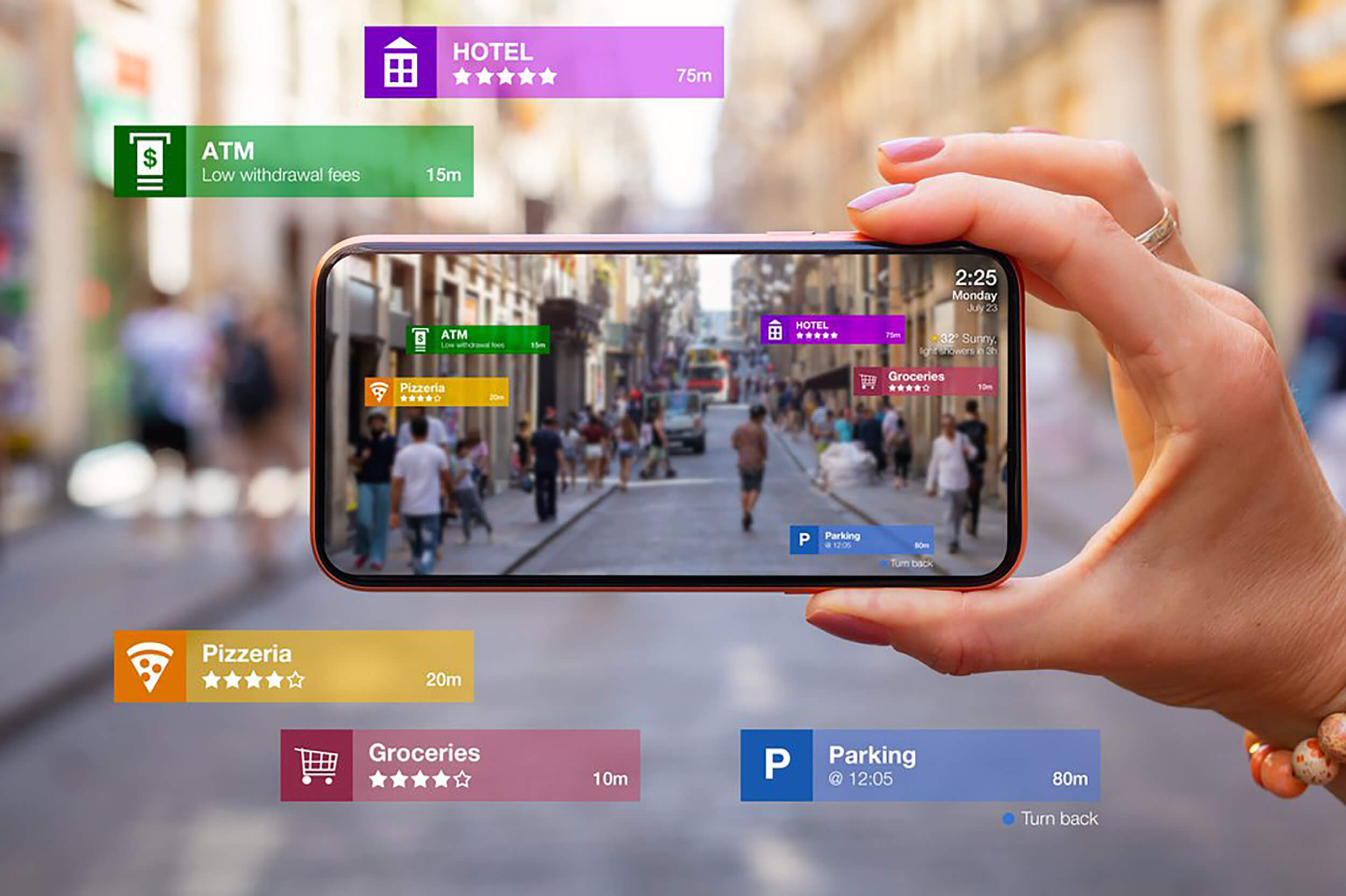 Virtual tourism and virtual tour
Virtual tourism and virtual tour
1.2. Navigating Unfamiliar Places with AR
AR facilitates easy navigation in unfamiliar places by overlaying digital directions onto the real-world view through your smartphone. For instance, imagine wandering through the bustling streets of Hanoi’s Old Quarter and using an AR app to find the best local pho restaurant or the nearest ATM. Apps like World Around Me highlight nearby ATMs, restaurants, hotels, attractions, hospitals, shops, and transportation stops. This integration of technology and travel empowers tourists to explore with confidence and ease, making their journey more enjoyable and stress-free.
1.3. Entertaining Guests with AR Experiences
AR adds a new dimension to guest experiences at museums, art galleries, historical sites, and other attractions by providing real-time information about paintings, artifacts, and exhibits. For example, Museum Buddy offers self-guided tours, object narrations, museum maps, and a wealth of information for some of the world’s most popular museums. Imagine visiting the Vietnam National Museum of History and using an AR app to learn about the artifacts in each exhibit, enhancing your understanding of Vietnamese culture. Additionally, AR travel gaming apps such as Geocaching engage visitors in virtual treasure hunts or invite them to solve puzzles, taking exploring parks, zoos, gardens, and historical sites to a new level of fun.
2. How Does AR Improve Customer Satisfaction in Vietnamese Travel?
AR improves customer satisfaction by personalizing travel experiences, enhancing communication, and providing real-time assistance, ensuring a smooth and enjoyable journey. According to Forbes, 63% of customers will stop using a brand if it uses poor personalization tactics, AR integrations and features, help clients book a room after virtually browsing multiple options, seamlessly navigate points of interest to them, and enjoy interactive, tailored itineraries. With AR, you can tailor every part of your customer’s journey. From booking accommodations to navigating local attractions, AR provides customized solutions that cater to individual preferences. Imagine using an AR app to find the best street food vendors in Hanoi based on user reviews or receiving personalized recommendations for hidden gems in Ha Long Bay.
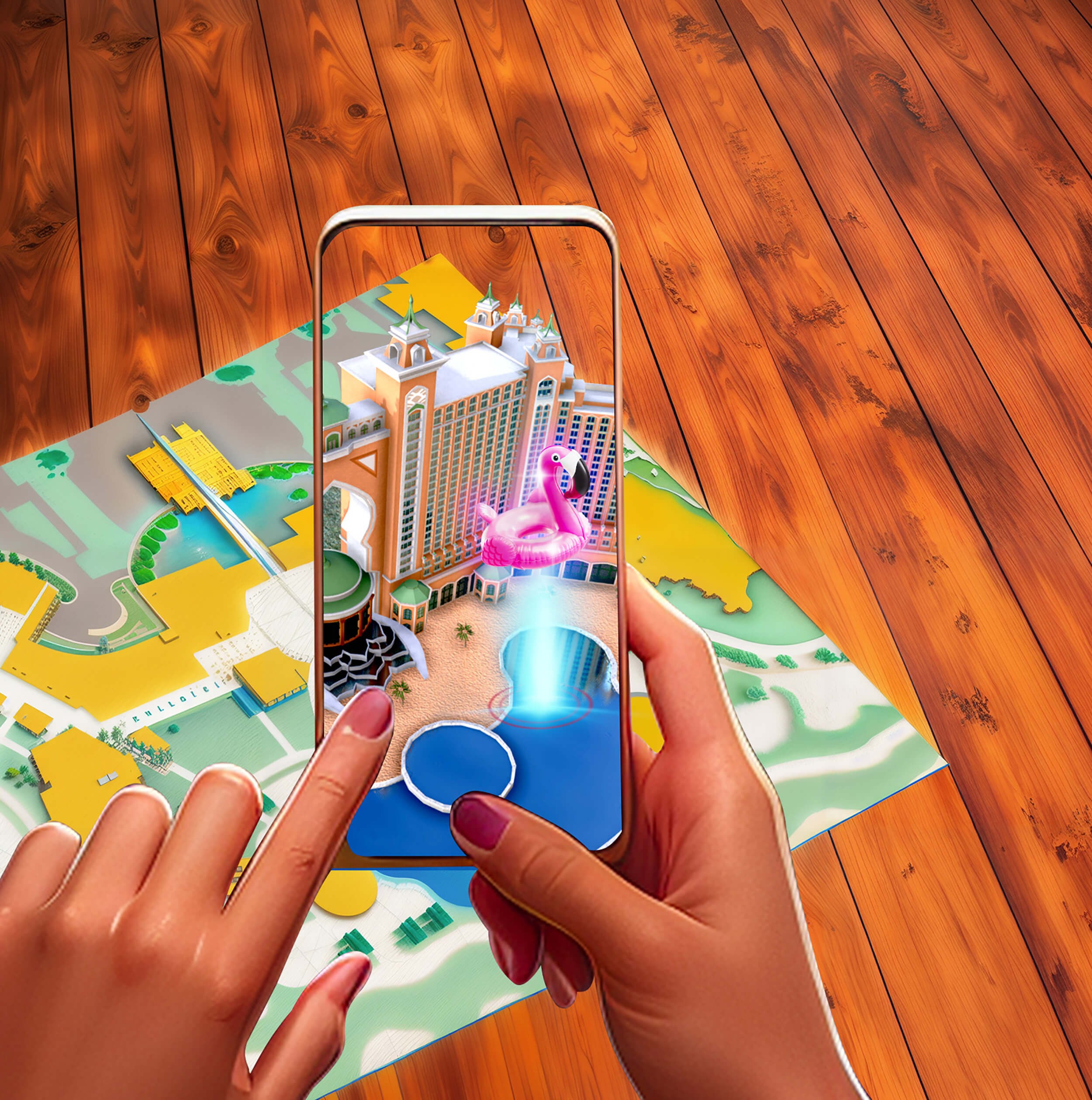 Augmented reality tourism
Augmented reality tourism
2.1. Personalizing Travel Experiences with AR
AR enables personalized travel experiences by tailoring itineraries and activities to individual preferences. Imagine using an AR app to customize your visit to the Cu Chi Tunnels, receiving information about specific sections based on your interests, or creating a personalized walking tour of Hoi An with historical reenactments and interactive exhibits. This level of personalization ensures that every traveler’s experience is unique and memorable. SIXT.VN’s platform facilitates this by integrating AR features that cater to specific interests and preferences, enhancing overall satisfaction and engagement.
2.2. Enhancing Customer Communication Through AR
AR enhances customer communication by providing real-time reviews and ratings for visited places, allowing businesses to improve their services and tailor experiences. For example, imagine leaving an AR review for a hotel in Hanoi, providing instant feedback on your stay, or using an AR app to communicate with a virtual concierge for immediate assistance. By incorporating AR avatars or virtual representatives, businesses can guide customers through their travel experiences, answer common questions, and offer support, improving communication and customer satisfaction.
3. How Can AR Increase Revenue in the Vietnamese Travel and Tourism Sector?
AR can significantly increase revenue in the travel and tourism sector by providing enhanced virtual tours, virtual shopping experiences, augmented advertising, and gamified travel experiences, all of which can drive engagement and spending. According to Smartify, eShop platform, lets users access art from galleries like The National Gallery in London and buy prints, souvenirs, mementos, and gifts directly from their smartphone.
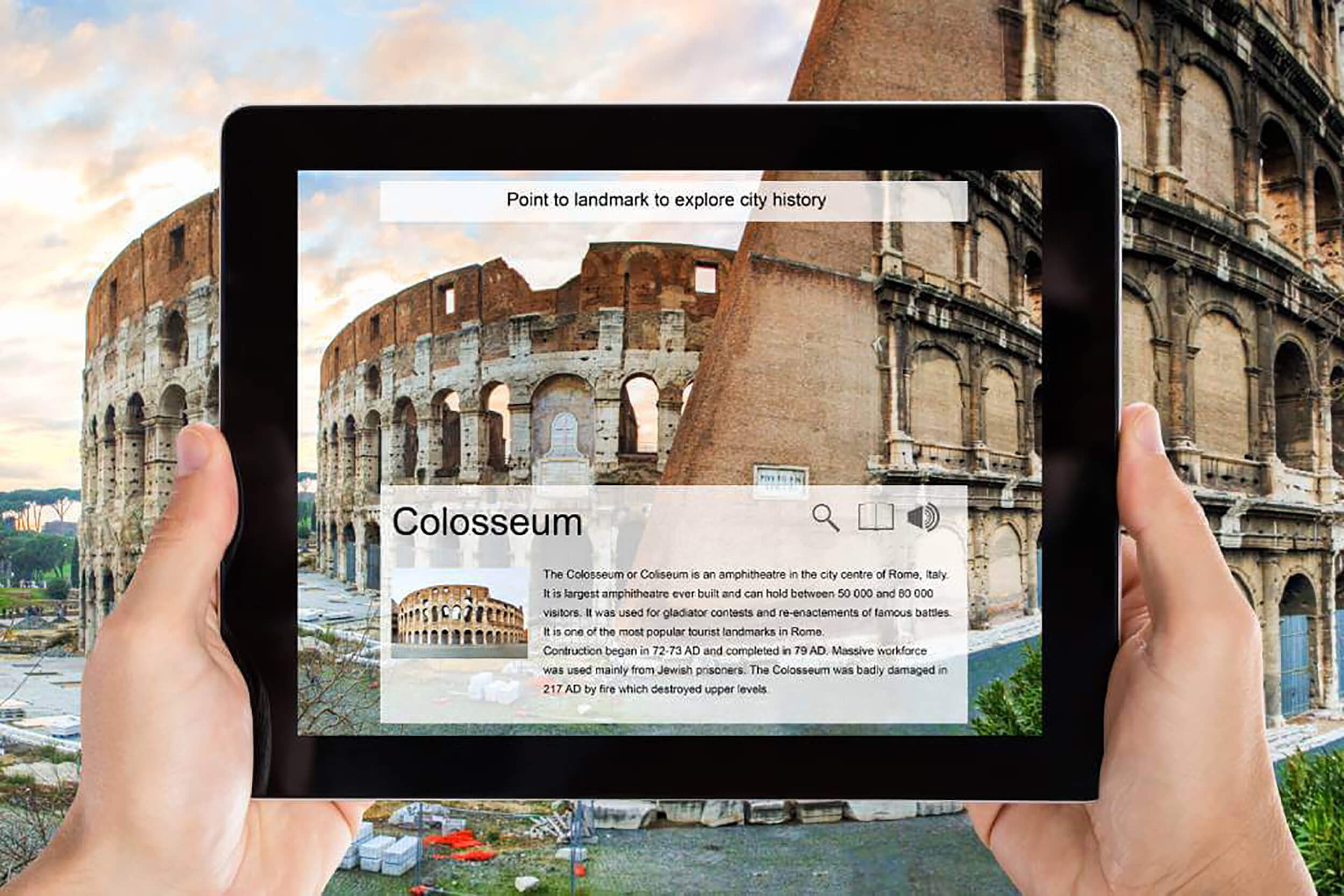 colosseum with ar travel guide
colosseum with ar travel guide
3.1. Boosting Virtual Tours with AR
AR enhances virtual tours, allowing users to explore destinations and attractions in real-time and interact with virtual elements, thereby generating revenue through ticket sales and partnerships. Imagine taking an AR-enhanced tour of Ha Long Bay, complete with virtual boat rides and interactive maps, or exploring the ancient ruins of My Son Sanctuary with historical reenactments. These immersive experiences can drive ticket sales and generate revenue through partnerships with local businesses.
3.2. Virtual Shopping Experiences with AR
AR transforms traditional souvenir shopping by allowing tourists to virtually try on clothing, accessories, or test products before making a purchase. This enhances the shopping experience and provides a unique way for travel companies to generate additional revenue. For example, imagine using an AR app to virtually try on a traditional Vietnamese áo dài or test local handicrafts before buying them. This not only enhances the shopping experience but also provides a unique way for travel companies to generate additional revenue.
3.3. Utilizing Augmented Advertising
AR-enabled devices allow marketers to create engaging advertisements that blend with real-world environments, extending brands into the digital layer and increasing their impact. Imagine walking through Hanoi and seeing an AR advertisement for a local restaurant, complete with 3D models of their dishes and interactive menus. Featuring creative design work and animation, these campaigns can be highly impactful, driving traffic and increasing brand awareness.
3.4. Gamification in Vietnamese Travel
AR transforms travel into interactive and educational experiences by integrating game-like features that allow users to participate in challenges, complete quests, and earn rewards as they explore destinations. The app Jurassic World Alive invites users to find virtual dinosaurs in different real-world locations, enabling them to learn about the ancient creatures at the same time. Imagine exploring the ancient city of Hue and participating in a virtual treasure hunt, solving puzzles to unlock historical information and earn rewards. This gamified approach makes travel more engaging and provides opportunities for travel and tourism companies to generate additional revenue through premium game experiences and in-game purchases.
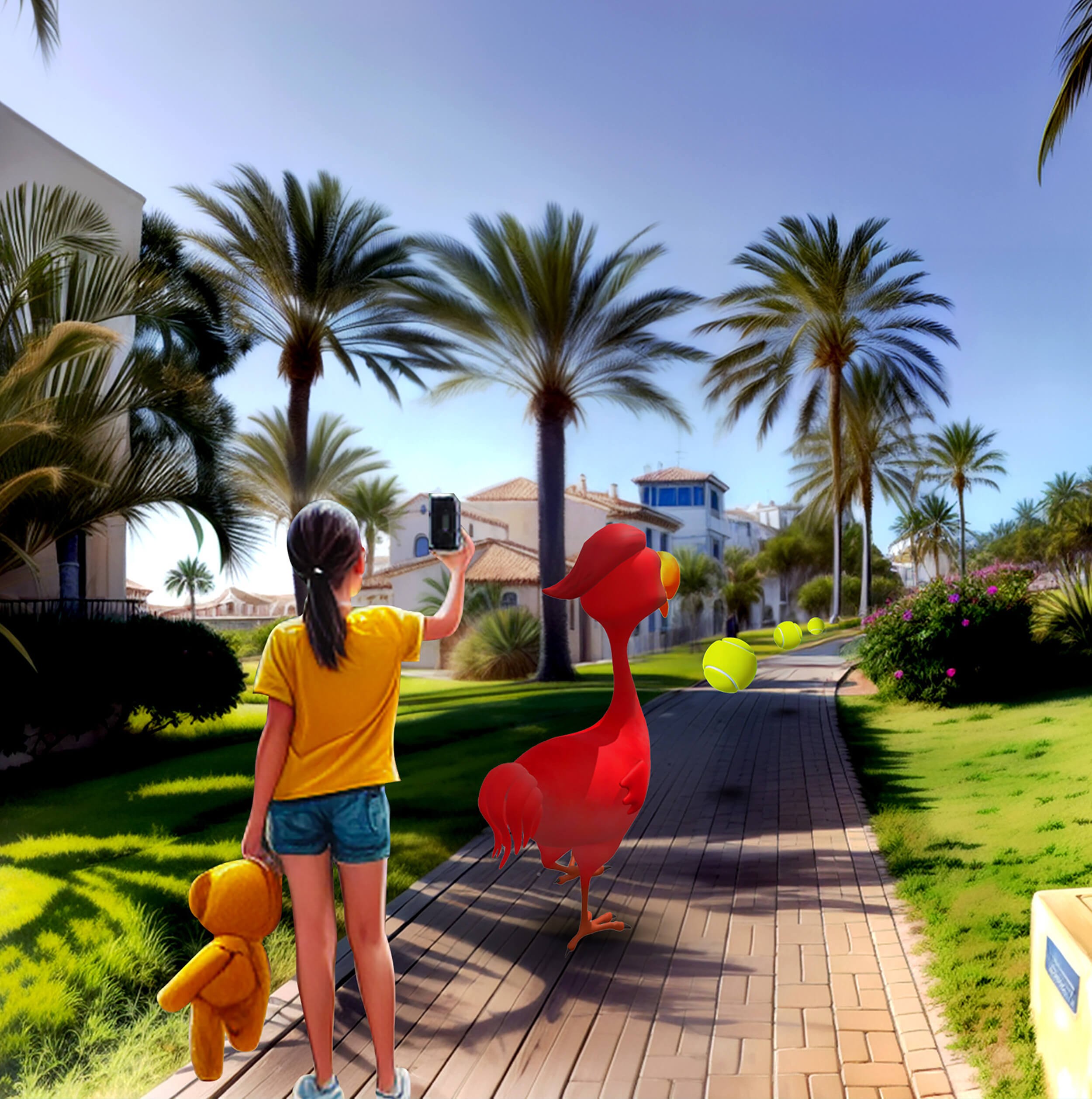 AR in Travel and Tourism – Game 1
AR in Travel and Tourism – Game 1
3.5. Driving Sales and Conversions
AR provides virtual tours of destinations, cruise ships, and leisure facilities, offering potential customers a sneak peek into their holiday bliss and increasing the likelihood of booking. This also makes it easy for travelers to book day tours on demand. Imagine browsing and engaging in activity options from within an app and using the same app to instantly book the activity. This is especially useful for weather-dependent activities or to avoid long lines.
4. How Can the Hospitality Industry in Vietnam Benefit from AR?
AR can revolutionize the hospitality industry by reducing operational costs, improving guest experiences, and driving more bookings through virtual tours, staff training, and enhanced guest services. The Holiday Inn uses augmented reality to offer virtual 360º hotel tours to prospective visitors.
4.1. AR in Hotels
AR in hotels offers virtual 360º tours to prospective visitors, helping them decide on room sizes, explore amenities, and evaluate conference facilities. Imagine using an AR app to explore a hotel room in Hanoi, checking the view from the window or evaluating the capacity of the conference rooms. This ensures that guests have a comprehensive overview of the facility layout, room privacy, noise levels, and views.
4.2. Training Hotel Staff Using AR
AR can enable employees to learn in a hands-on manner. They can use AR tools to visualize complex processes, simulate real-life scenarios, and receive real-time feedback. Imagine using an AR app to practice handling customer-facing scenarios in an augmented environment, receiving enhanced training with interactive guides and demonstrations. This can significantly improve staff performance and customer service.
4.3. Improving Guest Services with AR
AR brings a whole new dimension of convenience to the way guests interact with hotels. With virtual concierge services, visitors can instantly access information, make bookings, and request assistance by simply scanning their surroundings. Imagine holding a mobile phone camera toward the entertainment system might cause an overlay with instructions to appear on the screen. Or, as a user points their camera down the hallway, the AR application might superimpose directions to the restaurant, spa, or fitness center
Imagine scanning a menu to access information or ingredients, or even see how the dish was prepared. They could also scan a bottle label, as in the case of Chronic Cellars Purple Paradise, to access games. As The Glenlivet partnered with Rock Paper Reality to create a virtual tasting room, An AR tool like this offers twofold advantages for hospitality establishments: educate staff on the fly, and enhance the guest experience.
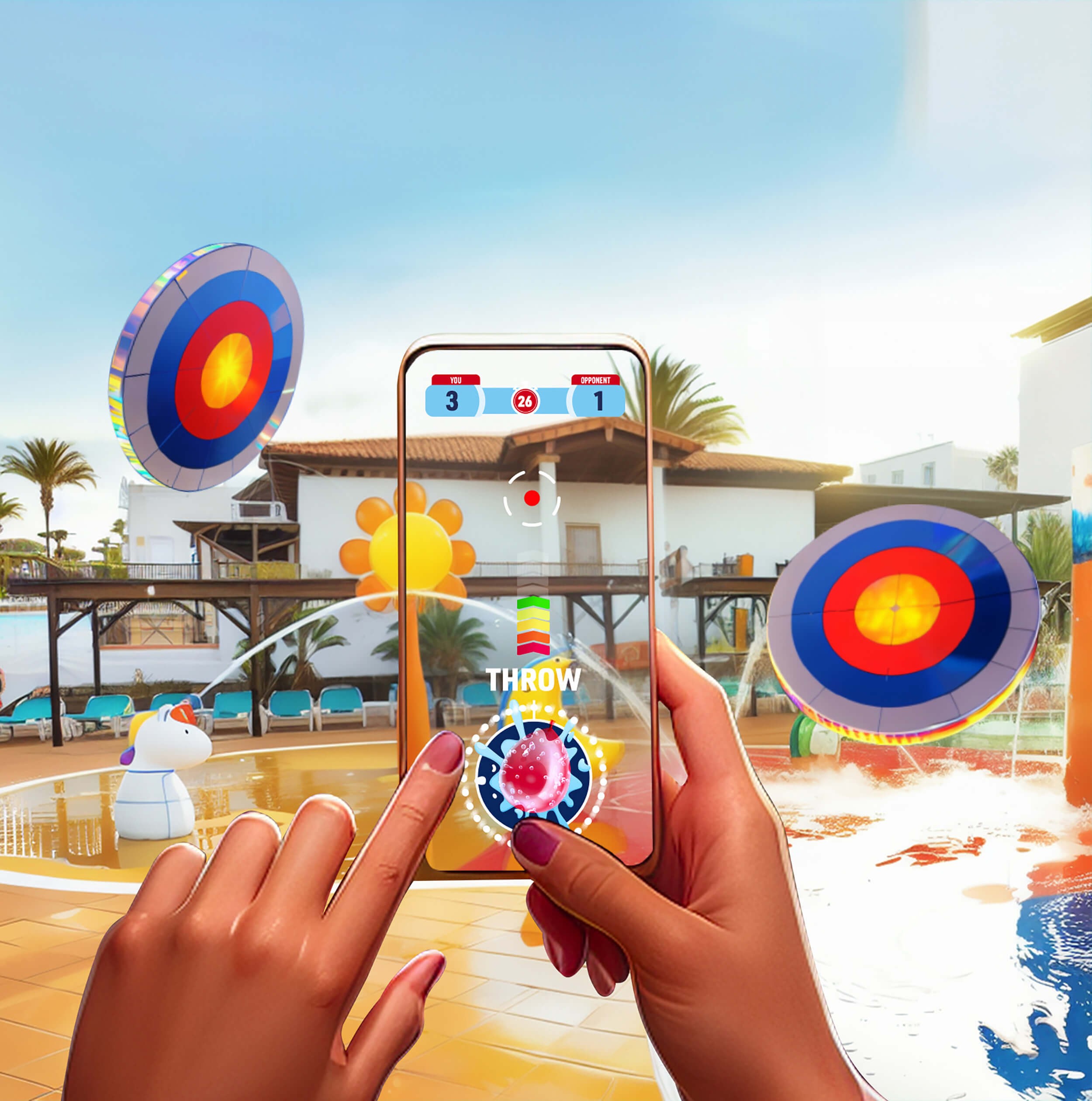 AR in Travel and Tourism – Game 2
AR in Travel and Tourism – Game 2
5. What are the Key Benefits of Using AR in Tourism?
The key benefits include enhanced customer satisfaction, increased revenue, improved operational efficiency, and unique competitive advantages in the travel market.
- Enhanced Customer Satisfaction: AR provides personalized and immersive experiences, leading to greater customer satisfaction and loyalty.
- Increased Revenue: AR drives sales through virtual tours, shopping experiences, and gamified activities.
- Improved Efficiency: AR streamlines operations with staff training and virtual concierge services.
- Competitive Advantage: AR offers unique and innovative services, setting businesses apart in the competitive travel market.
6. How Can SIXT.VN Integrate AR to Enhance Travel Services in Vietnam?
SIXT.VN can integrate AR to enhance travel services by offering AR-enabled travel guides, virtual tours of hotels and attractions, and interactive maps for navigation, providing a seamless and immersive travel experience. Imagine using SIXT.VN’s app to explore Hanoi’s Old Quarter with an AR overlay, discovering hidden gems and historical insights. Or, picture previewing your hotel room in Ho Chi Minh City with a virtual tour before booking. By leveraging AR, SIXT.VN ensures that every journey is personalized, engaging, and unforgettable.
7. What are the Challenges of Implementing AR in the Tourism Industry?
Challenges of implementing AR include high development costs, technological limitations, and the need for robust internet connectivity. Despite these challenges, the potential benefits of AR in tourism make it a worthwhile investment.
8. How Can AR Address Language Barriers for Tourists in Vietnam?
AR can address language barriers by providing real-time translations of signs, menus, and other text, ensuring that tourists can easily navigate and understand their surroundings. Imagine using an AR app to translate a street sign in Vietnamese to English instantly or scanning a menu to see the ingredients and descriptions in your native language. This enhances the travel experience and makes it more accessible for international visitors.
9. What Types of AR Applications Are Most Popular in Tourism?
The most popular AR applications include virtual tours, interactive maps, historical reenactments, and gamified travel experiences, all of which provide engaging and informative ways for tourists to explore destinations. For example, virtual tours allow users to explore attractions from their homes, while interactive maps offer real-time navigation and information.
10. How Does AR Contribute to Sustainable Tourism Practices?
AR can contribute to sustainable tourism by promoting eco-friendly attractions and providing educational content about environmental conservation, encouraging responsible travel practices. Imagine using an AR app to learn about the flora and fauna of a national park in Vietnam or to find eco-friendly accommodations and tour operators. This promotes awareness and encourages tourists to make sustainable choices, supporting the preservation of Vietnam’s natural and cultural heritage.
Ready to revolutionize your travel experience in Vietnam with AR? SIXT.VN offers a range of services to make your journey seamless and unforgettable. From convenient airport transfers and comfortable hotel bookings to expertly guided tours, we’ve got you covered.
Address: 260 Cau Giay, Hanoi, Vietnam
Hotline/Whatsapp: +84 986 244 358
Website: SIXT.VN
FAQ: Augmented Reality (AR) for Tourism in Vietnam
1. What is Augmented Reality (AR) in tourism?
AR in tourism uses technology to overlay digital information onto the real world, enhancing the travel experience with interactive elements, virtual tours, and personalized information.
2. How can AR enhance my travel experience in Vietnam?
AR can enhance your travel experience by providing virtual tours of attractions, real-time translations, interactive maps, and personalized recommendations.
3. Is AR technology readily available for tourists in Vietnam?
Yes, many tourist destinations and service providers in Vietnam are integrating AR technology into their offerings, making it accessible to tourists.
4. Can AR help me navigate in Vietnam if I don’t speak the language?
Yes, AR apps can provide real-time translations of signs, menus, and other text, helping you navigate more easily.
5. What types of AR tours are available in Vietnam?
AR tours can include virtual explorations of historical sites, interactive museum exhibits, and gamified city tours.
6. How can I access AR travel guides in Vietnam?
You can access AR travel guides through mobile apps, QR codes at tourist sites, and dedicated AR experiences provided by travel companies.
7. Are there any costs associated with using AR in tourism in Vietnam?
Some AR apps and experiences are free, while others may require a subscription or a one-time purchase.
8. Can AR help me find local businesses and services in Vietnam?
Yes, AR apps can highlight nearby restaurants, ATMs, hotels, and other services, making it easier to find what you need.
9. How does AR contribute to sustainable tourism in Vietnam?
AR promotes eco-friendly attractions, provides educational content about conservation, and encourages responsible travel practices.
10. What future developments can be expected with AR in tourism in Vietnam?
Future developments may include more personalized AR experiences, improved integration with local businesses, and enhanced virtual reality (VR) capabilities for immersive travel planning.



